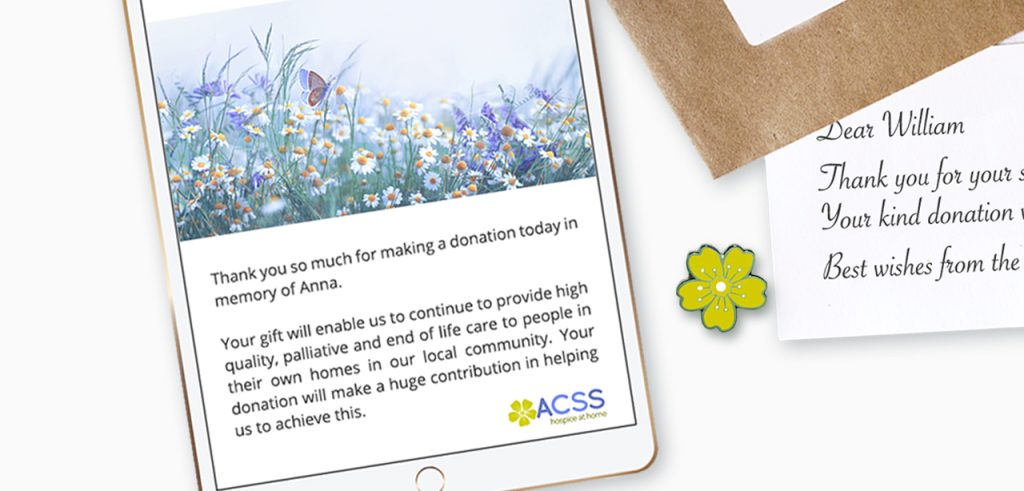

A special guest post by Kate Jenkinson, in-memory consultant and researcher for the In-Memory Insight Consortium. Contact Kate at kate@legacyvoice.co.uk or visit www.legacyvoice.co.uk
Kate has kindly shared five of her top tips to help charities take a fresh look at the in-memory content on their website, and the principles that have a big impact on this area of income.
Firstly, your landing area has always been your charity’s main shop window for in-memory opportunities. It’s your best, most cost-effective channel for creating awareness of in-memory giving as an option; for inspiring people to think about their own personal choices; and for equipping them with the fundraising and donation tools they need.
If you imagine that many people trying to access your in-memory information are in a state of emotional stress, they really appreciate ‘pull’ rather than ‘push' information that they can access easily – on their own terms, in their own time.
I said this has ‘always’ been the case, but then of course, this time two years ago, the world changed.
From then onwards, the most remarkable trend we’ve seen in the in-memory world has been this huge shift to online giving; and with it, a general move towards a higher number of lower value donations.
With this in mind, one fundraising area that we expected to continue growing throughout the pandemic is in-memory giving through online collection pages; and it has done just that.
Back in 2018/19, tribute funds only actually accounted for about 6% of total in-memory income – this has now risen to 14%. In our benchmarking, the average number of active tribute funds almost doubled between March 2020 and March 2021. The average annual income per active tribute fund also increased by around a quarter.
In effect, tribute funds have doubled their importance; and this growth has been seen across all different sectors of charities.
We don’t think that these are trends that will reverse – we think acceptance and familiarity with online giving have grown way beyond the point of return.
Digital in-memory activity is here to stay. It’s embedded into people’s lives through administration and communication and also has a deeper role to play in people’s holistic experience of loss. This just makes it even more critical that your online offers are working as hard for you as they can. With that in mind, here are five of my top tips for making your online content work for you.
The first thing to do is to sense-check that you’re taking prospects to your in-memory information by the most direct route you can, with the minimum number of clicks.

It’s so important that people in this situation don’t have to try too hard to access your content, because really they need very little incentive just to leave your site.
Bear in mind that people might try different things to locate your content, so they might go straight to your website search function and use a keyword like ‘funeral’ or ‘remember’ – it’s really worth testing out a few of these search terms for yourself and seeing what results come back.
You need to make sure that you’ve got all these potential routes covered and that from every point of entry you’re sign-posting prospects back to your main in-memory landing page.
The tone of voice is probably the most important constituent of the overall look and feel you’re trying to create with an in-memory audience, so it’s surprising just how many landing pages are still falling short.
Some of the main things we come across in this area are:

In-memory donors want the charity to regard any gift they make not just as another (standard) donation, but held in equally high regard by the charity – because it symbolises the ‘value’ of the person they’ve lost.
For the supporter, this is all about the special person they’re remembering. A great starting mantra is to never lose sight of your supporter’s ‘why’. What’s their reason for doing this in the first place, i.e. keeping alive the memory of their special person.
As the charity they’re supporting, there are lots of practical things you can do to help them keep their loved one's front and centre of the experience.
One of the most effective ways you can use your in-memory landing area is to talk directly to the supporter about the person they’re remembering. Make their loved one the main subject of your in-memory proposition, so your supporter feels valued, and they understand the impact of their donation. We know from our research that the more personal in-memory fundraising can feel, the better it will work, so keeping your supporter and their needs at the centre of your messaging is crucial.
Creating a more personal feel can make a real difference. If you have a named contact (even better with a picture) instantly a sense of relationship is built up. Follow this through for offline communications to help your supporters really connect to your charity.

In our stewardship research, we also found that staff at the charity really do have a pivotal role in effective in-memory fundraising relationships.
Compassion is seen as an essential requirement, both for clinical but also fundraising staff, and the in-memory supporters we’ve spoken to actually rate this above fundraising know-how.
Other qualities that supporters feel are important to good stewardship include being friendly and approachable, efficient and practical, and appreciative and encouraging. All of these qualities are much more instantly communicated by a real person.
First of all, bear in mind that many people visiting your site will have been bereaved for the first time; they may well be completely new to your charity; this may even be the first time they’ve engaged with any charity.
So when they click, eg ‘Remember a Loved One’; they need a little scene-setting. The supporter should be told that there are all sorts of different ways they can support the charity in their loved one’s name, hopefully, one of which will be right for them. I think they also need to have their decision for visiting your page validated; they need to feel that supporting in-memory is normal and appreciated and valued.
Try to focus on the needs of the supporter, lead into the range of in-memory products that the charity has, reassure the supporter that they’re in the right place, for the right reason, and demonstrate the care and empathy that the charity personifies. This will help reassure bereaved supporters they are in the right place and encourage them to support your work.
For more in-depth analysis and more tips and suggestions from Kate, listen to her guest webinar - available to our partners on our Charity Support Site.
If you'd like to find out more about working with MuchLoved, and how we can support your charity please contact us on 01494 722818 or email support@muchloved.com.